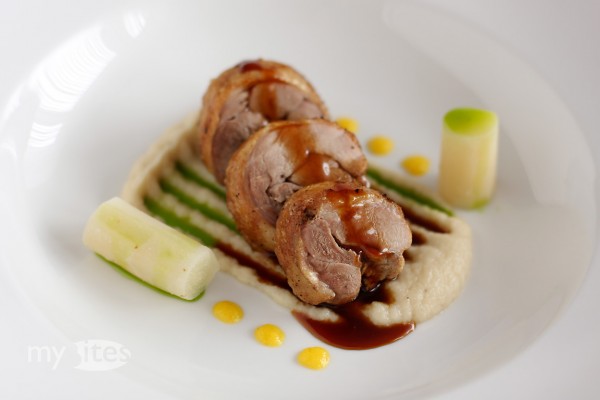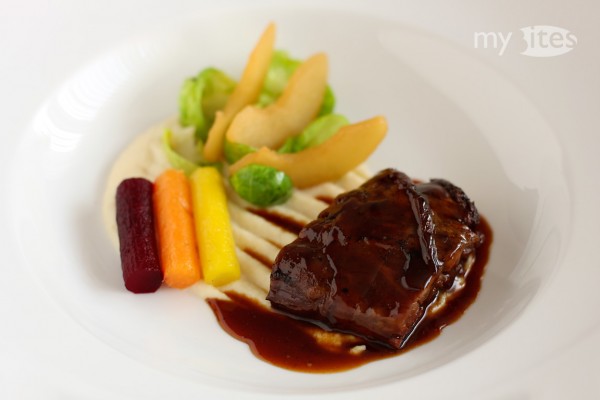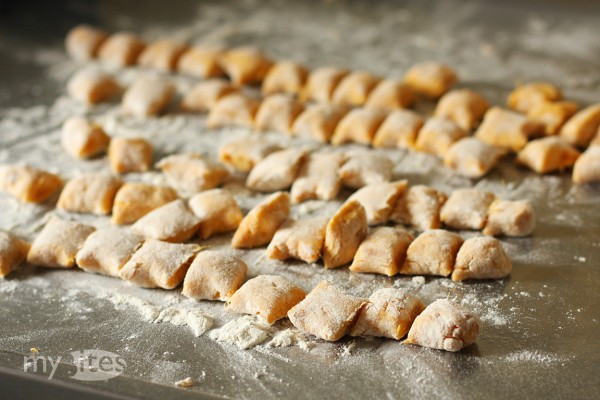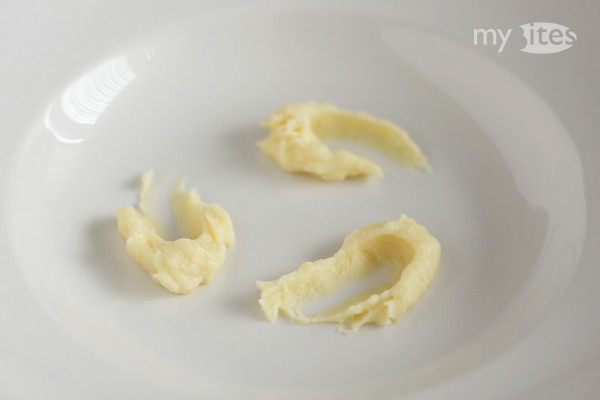Last year in spring I tried a new technique for cooking chicken legs. I carefully removed the bones, rolled the meat up and fixed it with kitchen twine. Then I roasted the chicken roll on all sides and baked the leg in the oven. The result turned out really great, so now in winter I gave the same technique a try using duck legs.
Tag Archives: quince
Braised Lamb Knuckle with Quince Sauce and Autumn Vegetables
Winter is the season of braised meat. The secret of braising is pretty simple: use the cheap cuts with a lot of connective tissue and do not trim anything off of them. So ask your butcher please not to trim off anything at all. You can still cut it off on your plate, but if you braise meat long enough, the connective tissue will just disappear. Meat cooks a lot faster than the connective tissues, but if you braise your meat at low temperature for a long long time, the connective tissues are going to melt into the meat and turn the meat moist and soft. That is also the secret of all braised dishes and why they need so much time. I like to prepare them overnight in the oven. This way I don’t have to worry about any burnt parts and if I wake up during the night, I turn the meat around and go back to sleep. And I wake up in the morning with a wonderful scent of braised meat all over my flat.
Sweet Potato Gnocchi with Cinnamon Ice Cream
Next to blackberries, quince is my most favorite fruit. Although it resembles a pear or an apple, it is far too hard and sour to be eaten raw. However, if you cook quince almost indefinitely it not only turns to a lovely pink or red color, but also develops an irresistibly rich flavor. Unfortunately, the season for quince is quite short during autumn, but you can keep the jam, puree or quince jelly for several months. It pairs great with cheese, however, this time I used the quince puree in a dessert paired with another typical autumn and winter ingredient: sweet potato.
Pigeon Breast with Quince Sauce and Autumn Vegetables
I wondered why red or white wine is usually added to reduced sauces. Usually the wine is allowed to cook off completely, so in most cases – as long as you’re not cooking specifically a red wine sauce – wine is not so much added for its taste than rather for its acidic component. Another function of the wine is to scrape off the brown roasted parts from the bottom of the pot, but for this purpose water works perfectly well too. Instead of the wine I had the idea to add some quince as an acidic component. Cooking quince over a long time magically enhances its flavor, so I thought it would work ideally in a sauce too, since the the basic stock had to be cooked for several hours. The quince worked really well in the sauce, so if you have any problems with adding alcohol to a sauce – although the alcohol will cook off completely – during autumn you can add some fresh quince instead.



